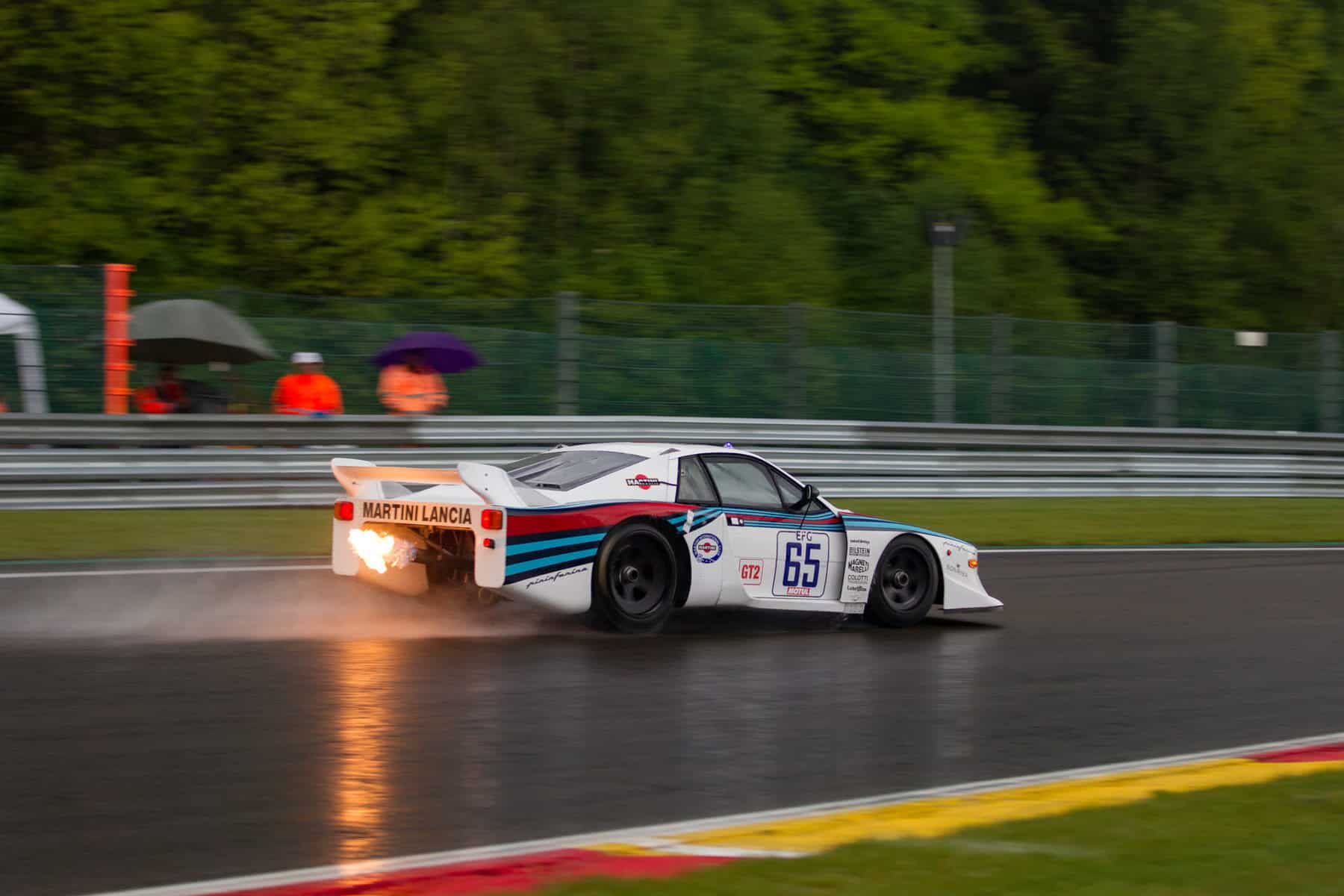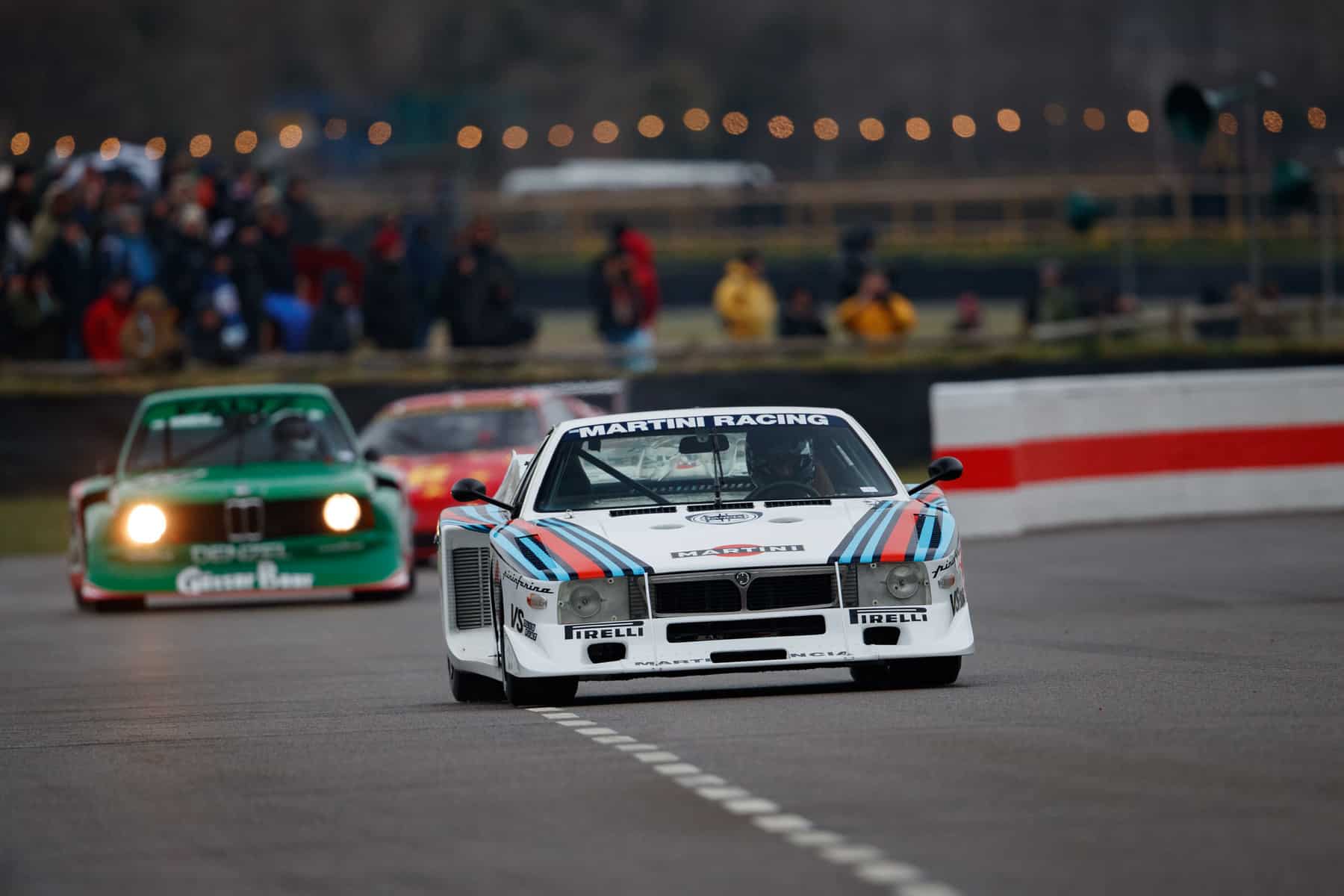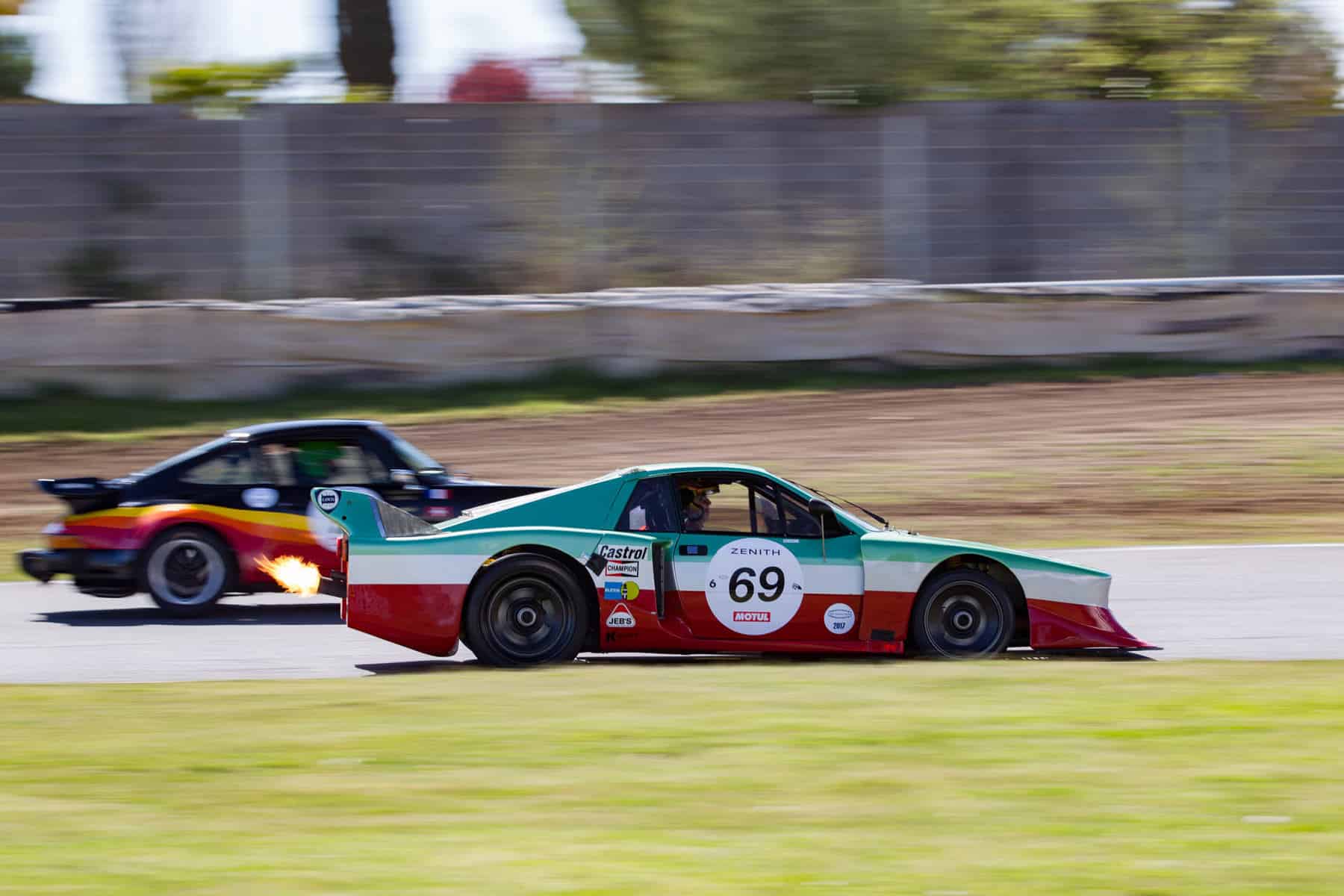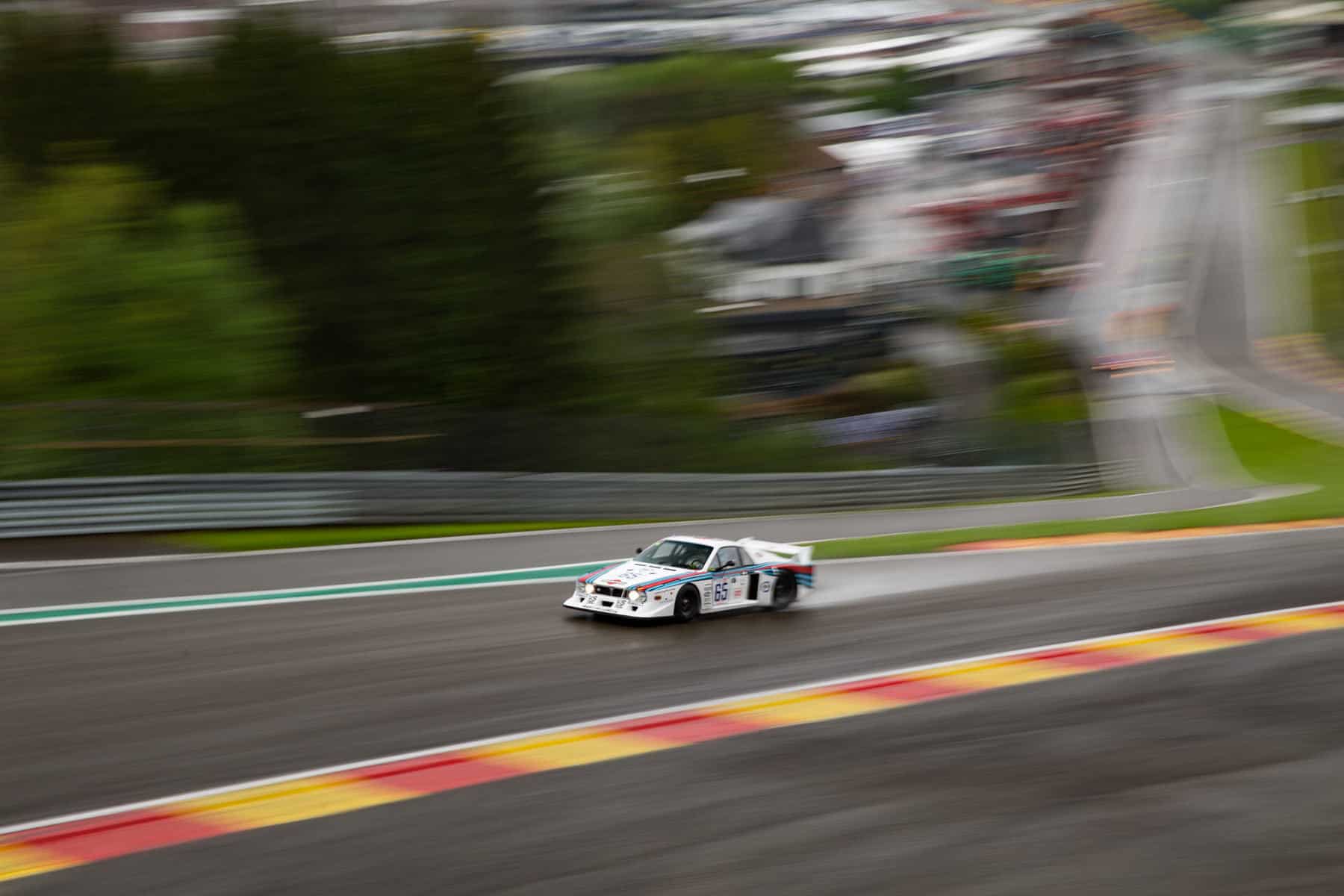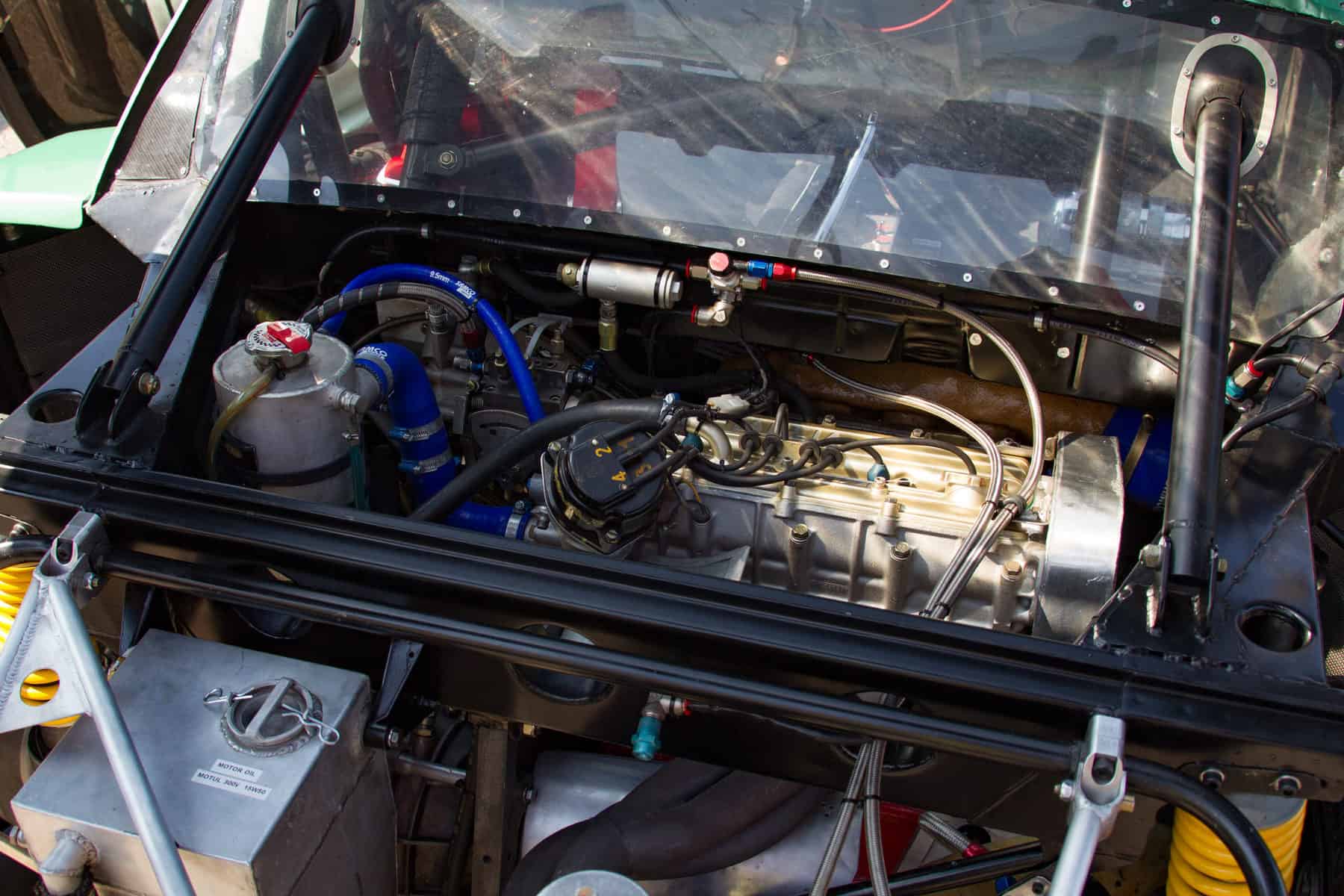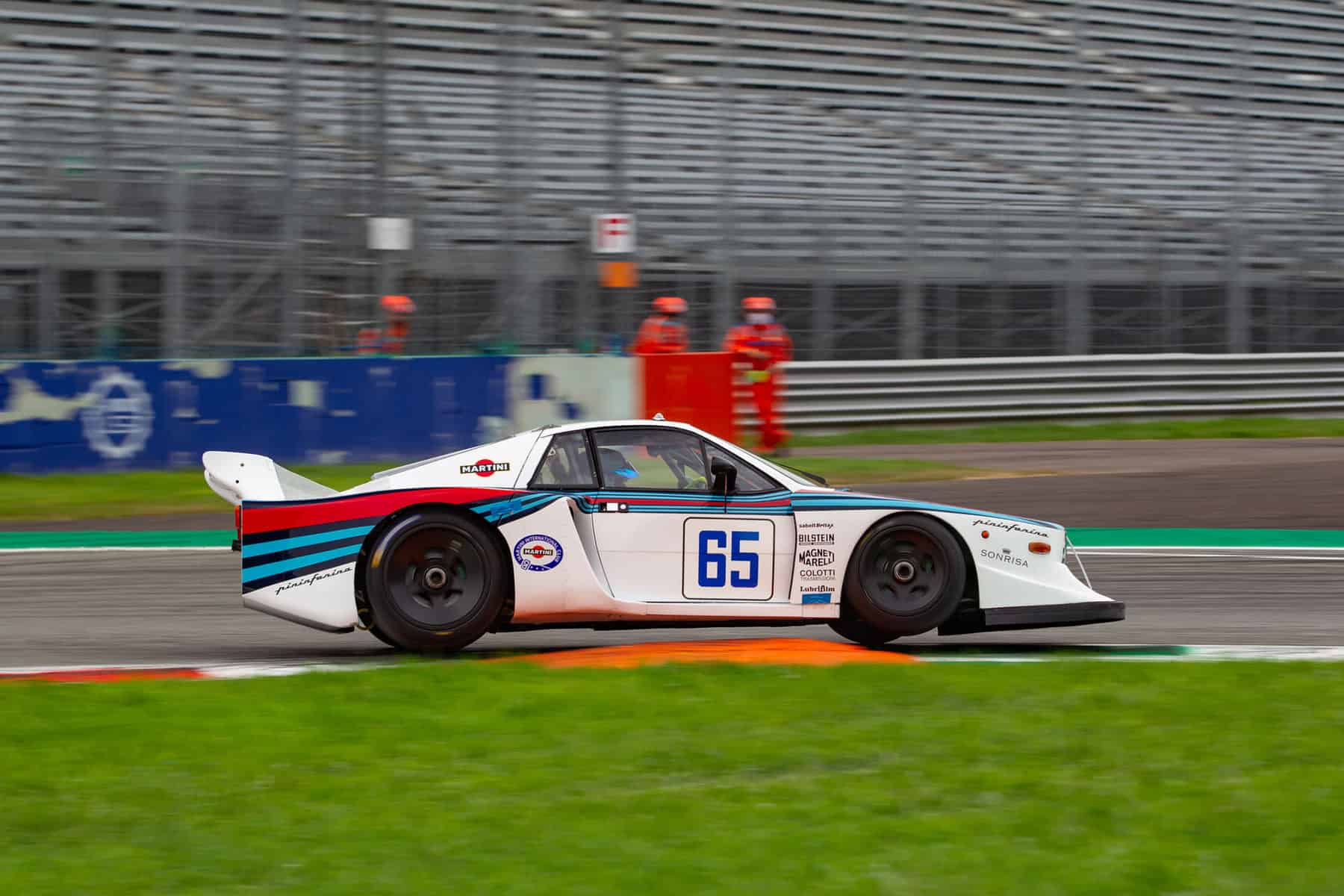Lancia Beta Montecarlo Turbo Group 5
The “monster” from Torino
WORDS & IMAGES BY: WOUTER MELISSEN
“To me, it looked like a monster.” Emanuele Pirro still vividly remembers his first encounter with the Lancia Beta Montecarlo Turbo Group 5 racer ahead of his first test with the car at Mugello.
The five-time Le Mans winner continues, “I saw the car passing by on the straight with stunning speed and stunning looks. It really scared me.” A few weeks later, the then nineteen-year-old made his international racing debut with the Lancia at the 1981 Daytona 24 Hours.
Introduced during the 1979 season, the Beta Montecarlo was Lancia Corse’s first foray into the World Championship of Makes. During the previous years the Italian manufacturer had been very successful in rallying, first with the Fulvia and later with the wild Stratos HF. The career of the Stratos was ultimately curtailed when the Fiat Group decided to focus its rallying efforts on the new Fiat 131 Mirafiori. This prompted Lancia Corse to look elsewhere. In a collaboration with Dallara, Abarth, and Pininfarina, the Italian manufacturer produced the Group 5 specification Beta Montecarlo Turbo, which turned out to be more than a worthy replacement for the Stratos.
During this period, sports car racing was divided in six “groups,” with Group 1 through 5 covering production-based machinery and Group 6 purpose-built prototypes. The regulations allowed for an ever greater degree of freedom, with Group 5 requiring little more than the roof and doors of the original road car to be carried over. The World Championship of Makes was run for Group 5 cars with Group 6 machinery only eligible for individual victories. The Stratos HF was built to Group 4 regulations, which was rallying’s top category. Lancia got a toe in the water with a Group 5 version of the Stratos but instead opted to base the next racer on the more modest Beta Montecarlo road car.
Introduced at the 1975 Geneva Motor Show, the Beta Montecarlo was Lancia’s range-topping production model. Unlike the entry-level, front-engined Beta that had entered production in 1972, the Montecarlo was powered by an engine that was mounted amidships. Designed by Aurelio Lampredi, who had also penned one of Ferrari’s first V12s, the engine used in the Beta Montecarlo was a 2.0-liter, twin-cam, four-cylinder unit. It produced a modest 118 hp, which was a far cry from the power needed to be competitive in Group 5. Fortunately, the regulations allowed for sufficient changes to sort this issue.
Working with chassis wizard Gianpaolo Dallara, who had also helped with the Group 5 Stratos, the Beta Montecarlo chassis was carefully stripped down. What remained of the original car was the center section, which included the roof and doors as per the regulations. The roof itself was now aluminum, while the doors were a lightweight fiberglass facsimile of the original. Grafted to each end of the steel monocoque was a purpose-built steel tubular subframe. Creating the front and rear thirds of the chassis from scratch allowed the engineers to find the optimal suspension geometry and also freed up crucial space to fit much larger and wider wheels. The suspension was through McPherson struts on all four corners.
Group 5 was split into two divisions – under and over 2.0 liters. Lancia opted to compete in the smaller category and with the help of Abarth, a turbocharged version of the Lampredi engine was created. To still meet the sub-2.0-liter requirement and taking the 1.4 equivalency factor in mind for a forced-induction engine, the displacement of the regular production engine had to be decreased to 1,425 cc. The massive turbo fitted was supplied by KKK and was identical to the one Porsche used on the 3.0-liter 934 engine. Running at 1.2 bar boost, the engine was good for 370 hp — with the dial turned to 1.6 bar, it produced 420 hp but initially would not last a racing distance with that much power. As in the production car, the engine was mounted transversely behind the driver’s compartment. The transverse gearbox was cast in magnesium in the production car molds with Colotti internals.
As for the production road car, Pininfarina was called in to help with the exterior design. The aesthetics were now second to the functionality, but for this the legendary carrozzeria was equally well equipped with its sophisticated, in-house wind-tunnel. Using the regular production Beta’s shape as a starting point and retaining the lines of the roof and doors as per the regulations, the Group 5 racer’s striking body was crafted. It featured a deep chin spoiler and massively flared wheel arches at the rear. This served to clear the wide rear tires and also provided fresh air to the radiators and intercoolers mounted behind the doors. An impressive wing was mounted on the tail of the car. To save weight, the frame surrounding the production car windshield was also made from fiberglass in what must have been a very expensive mold.
Still impossible to be mistaken for anything but a Lancia Beta, the new competition car was unveiled to the public at the Pininfarina factory in December of 1978. The car was liveried in a very distinct manner, featuring flat black with red flames. That livery was retained for the car’s competition debut in 1979 with the sister car adopting white flames. Although the new 1.4-liter engine was not quite ready, testing commenced in February of 1979. As a substitute, the Lancia Corse team used the naturally aspirated, 2.0-liter version of the Lampredi engine from the Fiat 131 Mirafiori rally car. This was replaced with the turbocharged unit in April, which was too late for the intended competition debut at the Mugello round of the World Championship. Instead, chassis 1001 first raced early in May, at the Silverstone 6 Hours with Formula 1 racer Riccardo Patrese and future World Rally Champion Walter Röhrl at the helm.
Although very fast in qualifying, it was an inconspicuous debut for the new Beta Montecarlo Turbo, as the head gasket failed even before Röhrl could take over the wheel from Patrese in the race. The Nürburgring 1000 km was next and there was more serious competition in the form of the Zakspeed-built Ford Capri and the privately run Jägermeister BMW 320i. It was a better showing for the the Beta, but it again failed to reach the finish after an oil line was damaged in a minor accident. The 2.0-liter class victory went to the Jägermeister BMW instead. It was third-time luck for Patrese at Enna as he won the class with Carlo Facetti as co-driver. He won again with Röhrl at Brands Hatch. These two wins were sufficient to clinch the class World Championship due to a lack of full season entries by the rival teams.
At the end of the season, two cars were entered in the Giro di Italia road rally. Liveried in the striking Alitalia colors, the first car was shared by Ferrari Formula 1 racer Gilles Villeneuve and Röhrl, who also drove for Fiat in the World Rally Championship. Drafted in for the circuit stages, Villeneuve could only compete in four races due to his testing commitments for Ferrari. Likewise, Patrese was joined by Röhrl’s Fiat teammate Markku Alén to compete in the special stages. The engines were slightly detuned to make them more suitable for the event and it worked like a charm. The two Betas ended the event first and second on the road. Unfortunately, they were disqualified for using the Autostrada highway between stages.
For the 1980 season, the Group 5 regulations were modified to spice up the events and allow the smaller cars to take on the mighty Porsche 935s. Two divisions were created, with Division 1 for cars over 2.0 liters and Division 2 for under 2.0 liters. Points scored in each class now counted equally for the World Championship of Makes. A Division 2 win counted for just as much as an over-2.0-liter win. This meant that Lancia could take on Porsche without actually racing against the German manufacturer during the events. It was the start of very exciting rivalry between Porsche and Lancia. This even prompted the two manufacturers to “run interference” – Lancia would field an additional car with an engine just large enough to fit in Division 1, while Porsche made a 2.0-liter version of the turbocharged, flat-six engine available to customers.
Incorporating the lessons learned in the debut season, a modified version of the Beta was fielded in 1980. It featured wider and much larger nineteen-inch rear wheels and a tweaked engine that was now good for 440 hp. The two works cars were finished in red or blue, both with white flames. A third car was run with considerable factory support by the Jolly Club for Carlo Facetti and Martino Finotto in green, silver, and red. Just how close the relationship was between the two teams became apparent when only the Jolly Club was present, racing one of the 1979 works cars. Setting the stage for a fantastic season, they won Division 2. Points were only awarded to the highest-placed car from a manufacturer, so the first twenty points were in the bank for Lancia. This was the first of a total of eleven races that counted towards the World Championship. The three worst results could be scratched, so 160 points was the maximum.
The two works cars, with F1 racer Eddie Cheever and Michele Alboreto now also added to the driver ranks, were first raced at Brands Hatch. Lancia Corse made their intentions clear and not only won Division 2 but also scored an outright win at Brands Hatch. In the next eight races, including at Le Mans, a Beta would win the class. By round eight, the maximum 160 points had already been scored. At Monza and Vallelunga, the slightly larger-engined Beta (1,429 cc vs 1,424 cc) also won Division 1. This was exactly what Lancia needed at the end of the year, as Porsche would also end the season with 160 points but had scored one less class win than Lancia. This broke the tie, making Lancia the World Champion in 1980. Hans Heyer also won the German Group 5 Championship with a Beta. For the Fiat Group, the success was made complete by Röhrl winning the 1980 WRC with the Fiat 131.
It was after this hugely successful season that a very fresh-faced Emanuele Pirro was called up by Lancia Corse supremo Cesare Fiorio to test the World Championship–winning machine. “To me actually it was a surprise as it was only my second-year racing,” he recalls. “The Fiat Group had created a new entry-level race series in 1980; Formula Fiat Abarth. It was a successful first season with fifty-two 2.0-liter single-seater racers. I won that championship and because of that, Fiorio asked me to come to Daytona and bring my helmet and overalls without really promising anything.” In that same conversation, Fiorio did also ask Pirro to come to Mugello to test the Beta Montecarlo, “just in case.” The young Italian was right to be intimidated, as the only cars he had previously raced, the Formula Fiat Abarth single seaters, barely had 150 hp.
“Of course, looking from the outside everything looks more difficult.” Pirro continues: “Once you sit in the car, you do what you can do; all cars have three pedals, a steering wheel, and a gearstick and in the end you find a way to drive it.” He drove the car for only a handful of laps and then traveled to Daytona where Fiorio added Pirro to the third works car, which he shared with Facetti and Finotto. It was Lancia’s first works entry at Daytona and even for the experienced drivers in the team, it was a daunting prospect: “The banking was shocking and not only to me. We got to the track in a rental car with Michele Alboreto, Riccardo Patrese, and Teo Fabi and when we saw the banking, we got scared. The corners are very steep and they look even steeper. We thought, what the hell are we doing here?” Pirro quickly adapted to racing at Daytona and together with Facetti and Finotto, he finished fifth overall and first in Division 2, in what was his very first international race.
Pirro still has vivid memories of what it was like to race the Beta: “It had a very small engine, with a big, big single turbo. As a result, the engine was basically giving all or nothing and the turbo lag was gigantic; I think it must have been two or three seconds from the time you press the throttle to the time you get the power.” This required a peculiar driving technique: “You could not really brake that late into a corner because just prior to entry you already had to press the throttle to the floor in order to have the power at the end of the corner. Then the car would start shaking because it really got a big boost and then delivered a push that was really quite spectacular.” His performance at Daytona had clearly impressed Fiorio, and Pirro was called in to race the Beta again at Le Mans and late in the year at Kyalami. His Le Mans debut was cut short by an accident, and he would finish fourth overall in South Africa alongside Alboreto.
The Division 2 victory at Daytona was again a sign of things to come for the Lancia Corse team in 1981. Now liveried in striking Martini colors, the Beta Montecarlo proved all conquering once more. Lancia won all six races that counted towards the World Championship and, as in 1980, ended the year tied for points with Porsche. With six Division wins against Porsche’s five, Lancia was once again World Champion of Makes. Heyer, however, was not able to defend his DRM title in Germany, as he was beaten to the championship by Klaus Ludwig in the mighty Group 5 Zakspeed prepared Ford Capri.
Having won everything with the Beta Montecarlo Turbo that the team could, Lancia Corse stepped up to the prototype ranks, first with Group 6 LC1 in 1982 and then with the LC2 Group C racer in 1983. Pirro was not part of this continued clash with Porsche, as he stepped up to Formula 3 with an Alfa Romeo engine, which was not part of the Fiat Group yet. He does have many fond memories of his one season with Lancia and still appreciates what it meant for his career: “I have stayed in very good touch with Fiorio over the years and not too long ago I was thinking about those early days. So I called him up and I said, ‘You know Cesare, I have thanked you many times but you must have been really brave. I was only a junior at the time.’ He replied: ‘I was a junior once, too.’ Which means you need to take a chance sometimes and I am glad he did it with me.”
Of the eleven Beta Montecarlo Turbos built between 1979 and 1981, quite a few have survived, and some are even raced in historic events. Among the biggest challenges running these cars today is finding proper tires for the unusually large diameter wheels. Regardless, it is a great privilege to see these cars race, complete with glowing turbos and big flames on the overrun.
